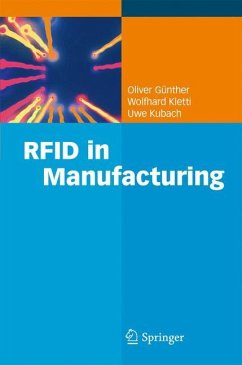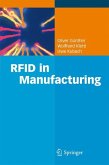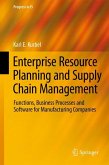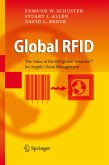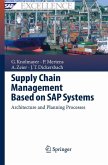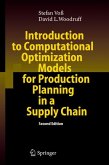Information systems for manufacturing often follow a three-layer architecture based on an enterprise resource planning (ERP) layer (for order planning), a manufacturing execution system (MES) layer (for factory control), and a shop floor layer (for machine control). Future requirements on flexibility and adaptability require a much closer integration of ERP systems with the manufacturing floor. To achieve this integration, an MES often pushes customer orders to the manufacturing floor in a flexible manner. Moreover, a large amount of shop floor data needs to be filtered and fed into business planning applications such as production planning or supply chain management. Radio Frequency Identification (RFID) chips can play an important role in the collection and management of such data.
Günther, Kletti, and Kubach explain the potential advantages of using RFID technology in a modern manufacturing and supply chain context. Areas of emphasis include integration of RFID data into legacy IT architectures, RFID-MES-ERP integration, and cost-benefit considerations. Their presentation is not restricted to intra-company production planning, but also emphasizes the benefits of inter-company collaboration. Six case studies based on SAP's ERP systems and MPDV's MES solution show how to successfully implement cross-company supply chain integration using RFID technology.
Günther, Kletti, and Kubach explain the potential advantages of using RFID technology in a modern manufacturing and supply chain context. Areas of emphasis include integration of RFID data into legacy IT architectures, RFID-MES-ERP integration, and cost-benefit considerations. Their presentation is not restricted to intra-company production planning, but also emphasizes the benefits of inter-company collaboration. Six case studies based on SAP's ERP systems and MPDV's MES solution show how to successfully implement cross-company supply chain integration using RFID technology.
From the reviews:
"A 'shop floor to top floor' examination of RFID's role in various production applications and how the technology can be deployed efficiently and cost-effectively. The compact, 163-page book serves as a guide for any manufacturing business contemplating a move to RFID for one or more applications. ... presents a detailed and focused overview of a key sector, keeps its readers' interests at heart and doesn't wander into superfluous areas." (Radio Frequency Identification Journal, August, 2008)
"A 'shop floor to top floor' examination of RFID's role in various production applications and how the technology can be deployed efficiently and cost-effectively. The compact, 163-page book serves as a guide for any manufacturing business contemplating a move to RFID for one or more applications. ... presents a detailed and focused overview of a key sector, keeps its readers' interests at heart and doesn't wander into superfluous areas." (Radio Frequency Identification Journal, August, 2008)
Aus den Rezensionen: "Das Hardcover betrachtet mögliche Vorteile der RFID-Technologie in der modernen Fertigung und im Supply Chain-Kontext. Alle Analysen ... beziehen ... zwischenbetriebliche Szenarien mit ein. Anhand von Fallstudien werden die erfolgreiche Implementierung und die Integration von RFlD in Lieferketten aufgezeigt. Auch zukünftige Anforderungen an die Anpassbarkeit, Flexibilität und Integrationsfähigkeit werden herausgearbeitet." (in: IT-Mittelstand, 2008, Issue 6, S. 55) "... Die Autoren analysieren die Hauptfunktionen moderner Produktionssoftware und erörtern abschließend, wie sich die Radiofrequenz-Identifikation in bestehende IT-lnfrastrukturen integrieren lässt. ... 'RFID in Manufacturing' ist ein praxisnahes Werk, das auf Erfahrungen aus erster Hand zurückgreifen kann. Insbesondere Unternehmen, die ihre Produktionsprozesse über die SAP-Software zur Ressourcenplanung steuern, erhalten viele nützliche Tipps rund um die Einführung von RFID." (in: RFID Newsletter, 2008, Issue 2, S. 12)

